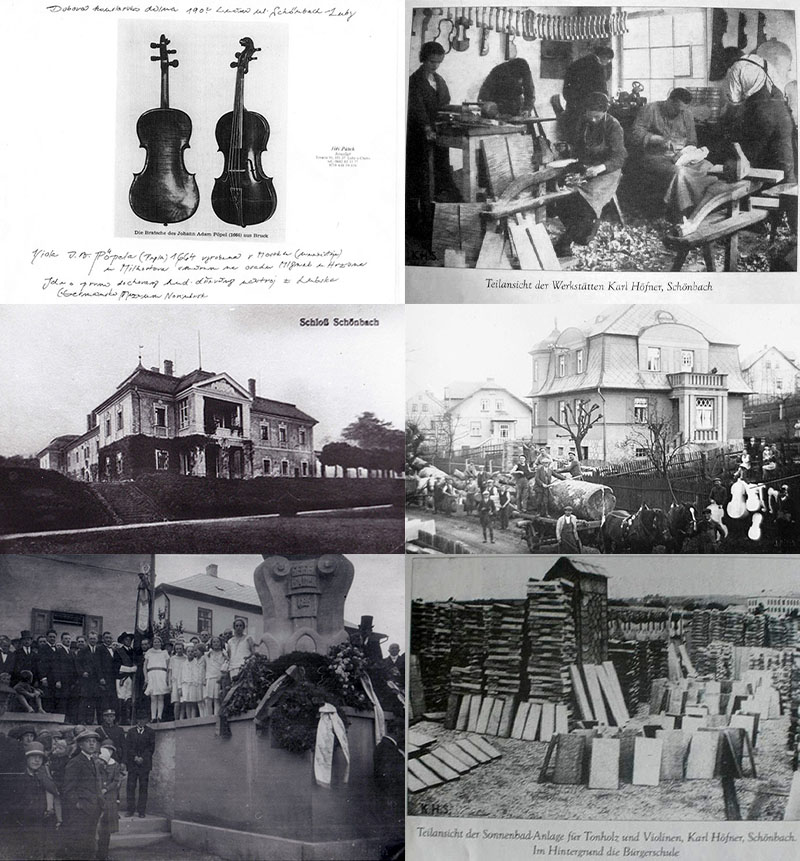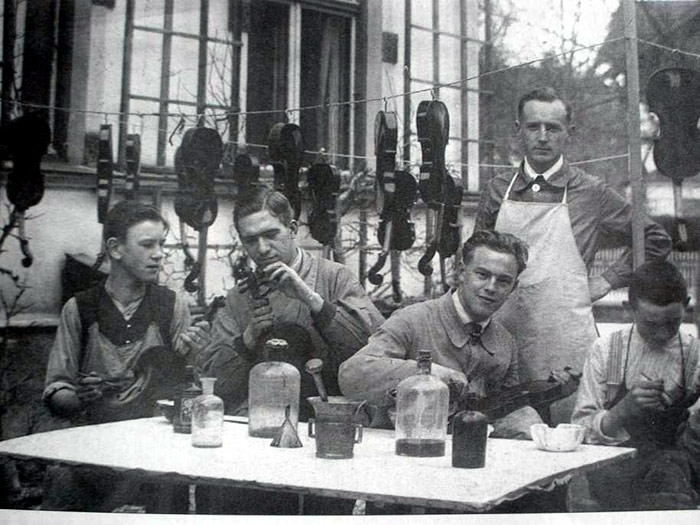About
An insight into the history of Luby u Chebu
The former Schönbach, todays Luby, lies in a territory previously called “the surrounding forrest” or “Lubský újezd”. First settlements of this area can be dated between 1100 and 1140. In the year 1319 the german king Ludwig IV. the Bavarian allows the abbot Johanm III. to make the village a town with the same rights as the close-by town Eger (Cheb).
The tradition of violinmaking in Luby most probably started as early as the late 16th century. With the development of mining in Horní Luby, not only miners were comming to town, but also musicians. Making musical instruments was a side income in times of low profits from mining. This era however is not documented as the town with its archive was destroyed in a fire in November 1739. Saved was only the registry from 1698, where the oldest existing instrument is documented – a violin from Jan Adam Pöpel from 1664. Today this instrument is kept in the museum of Nuernberg. Another record of an early violinmaker is from 1721 – Elias Placht was considered the founder of the violinmaking school of Luby. In the mean time the production of musical instruments is extended to neighbouring towns of Markneukirchen and Klingental.

In the 18th century quality master instruments in Luby are built mainly by the Plachta family and also by Sander, Hoyer and Schuster families. These are in fact the founders of the renowned Schönbach school. Later however the production of cheaper student instruments progresses, thus casting a shadow on the quality master instruments made in Luby. In 1873 a music school was founded in Luby and slowly is reoriented into a violin making school.
In the year 1900 with the introduction of electricity and railway into Luby the production of musical instruments increases markedly. In the following years more than 3000 people are employed in this field. The yearly production is some 150 000 instruments, which are exported all over Europe as well as overseas.
In the year 1927 a statue of a luthier is built in Luby a memorial to all unknown luthiers and music instrument masters who contributed to the development of this field in Luby region. In this era the Schönbach school was represented mainly by Karel Müller, Wilibald Wilfer, Alfred Neudörfer or later Josef Pötzl.
In the 1940s during the time of the world economic crisis and world war II there was a steep decrease in production. Right after the war almost all german violinmakers were froced to leave the country and settled in Bubenreuth by Erlangen in Germany, which is known as the second Schönbach even having the same statue of a luthier..
In the year 1948, as the communist party took power, the production of music instruments was nationalized and unified in a single company called Cremona. All manufactures and small workshops were part of this company.
From other parts of Czechoslovakia new master luthiers were comming. Among them were Bohumil Pechar, Jiří Mrkvička, Bohuslav Hřib and Josef Vávra. With their hard work they contributed to create the new generation of master luthiers in Luby.

During the 1970s and 1980s the high quality and good reputation of Luby violinmaking school was maintained by the masters Emil Lupač, Karel Zadražil, Josef Budil, Miroslav Pikart, Libor Šefl, Jan Pötzl and another young masters. They mainly worked for the Cremona factory which was after the revolution renamed to todays Strunal. Several new small businesses were created and now after a long time the master luthiers in Luby can work in their own workshops again.
In 2005 with strong regrets by Luby citizens the Luby luthier school was moved to Cheb for financial reasons by a decision of the Carlsbad regional government.
The look of the luthier statue over the town is for decades a guarantee that even through uneasy times Luby will remain reknown worldwide for the production of quality music instruments.
© 2023 by Tomáš Skála. All Rights Reserved.
